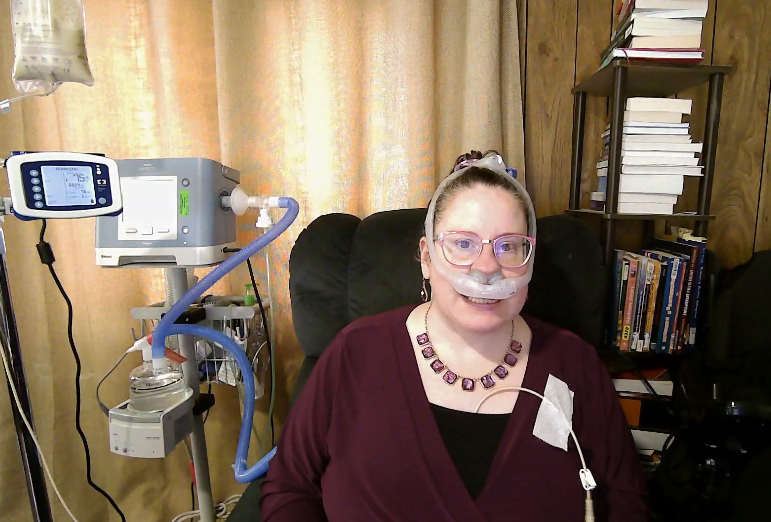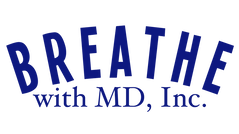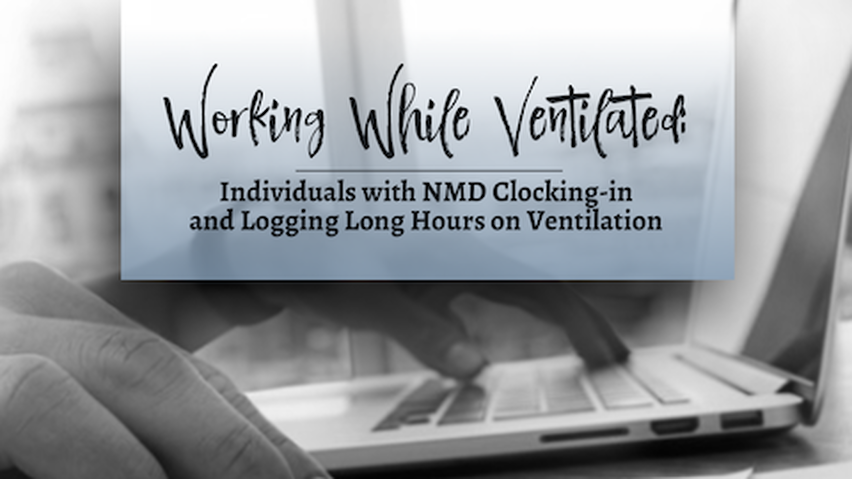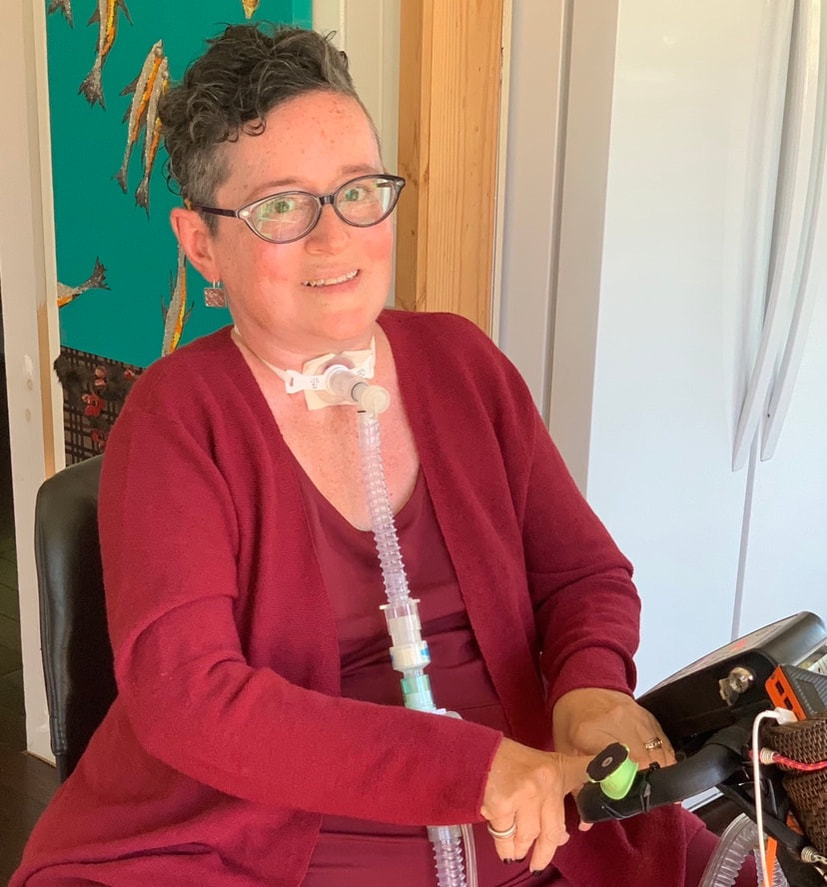|
By Andrea L. Klein "I taught myself to suction, change the vent battery, and silence the alarms, so I can be alone for long periods of time." - Carole Zoom Most people would never imagine an individual who uses 24/7 ventilation via tracheostomy working as a real estate agent. Carole Zoom’s love for helping families and businesses find the perfect location to grow and thrive makes this an ideal career choice for her.
“Good real estate work is about strong communication and negotiation skills, which most individuals with disabilities have extensive personal experience with,” she said. An agent with Keller Williams in Maui, HI, Carole sells residential and commercial properties. During the Coronavirus pandemic, real estate transactions are occurring primarily through virtual means. This has made the real estate field even more attractive for agents who live with disabilities. Since realtors are independent contractors, Carole works from home, is able to work any combination of hours, and chooses her own projects and clients. A team of caregivers drive her and travel along when needed. “When clients want to view a property that is not wheelchair accessible, buyers can view without me, and I can review with them after. Or I can provide a partner agent or assistant to lead them on the tour,” she said. Carole explained, “The commission structure of real estate can be advantageous for those on benefits as they transition to full time employment.” This makes her job particularly well suited for life with Collagen 6 Myopathy, a form of Muscular Dystrophy (MD) with a spectrum of clinical presentation ranging from Bethlem Myopathy on the mild end to Ullrich Congenital MD on the severe end. Like many adults with this condition, she spent decades unaware of her exact diagnosis. She was 52 when she learned she had the COL6A2 genetic mutation, one of three mutations that cause this progressive neuromuscular disorder that involves respiratory muscle weakness. She began using invasive ventilation through a tracheostomy in 2001 and transports her ventilator on the front of a mobility scooter during the day. She is able to breathe on her own off of the ventilator for an hour or two at a time, when she needs or chooses to be. Carole shared that her disability is “largely stable with very slight decreases in strength every year.” She gets around more easily than most she knows with neuromuscular conditions and is home alone for about 15 hours a day. “I taught myself to suction, change the vent battery, and silence the alarms, so I can be alone for long periods of time,” Carole explained. She commented that she’s lucky the settings on her home use ventilator allow her to have a strong and steady speaking voice. She recalls, “I resisted getting it [the ventilator], but I have to say I’m stronger and more energetic with the ventilator and wish I had gotten it earlier.” Carole recently moved to a new city in Oregon with what she describes as a great, accessible transportation system. She was looking forward to using public transit there to meet clients on her own. Then the pandemic hit, and her doctor advised against having contact with the public, including her clients. Like many with underlying health conditions that might result in a severe outcome from COVID-19, Carole has been isolated for more than 250 days. Her work currently involves maintaining relationships with clients and exploring real estate as a long-term investment strategy. Carole explained, “Work as a realtor is flexible, and my colleagues at our real estate firm have been very helpful when I need assistance due to life’s mishaps or my disability. I recommend real estate as an option for any person who is motivated and ambitious.” If you live with a muscle disease and “work while ventilated,” Breathe with MD, Inc. would love to share your story. Write us at info@BreathwithMD.org to learn more. "So, most of my work is on the computer--writing lectures, ebooks, blog posts, social media posts, etc. I can use my ventilator during these aspects of my work with no problems at all." -Keirsten Snover  Keirsten Snover is wearing a noninvasive ventilation mask and is seated next to her ventilator and other medical equipment. Keirsten Snover is wearing a noninvasive ventilation mask and is seated next to her ventilator and other medical equipment. Hi! I’m Keirsten and I'm an Anthropologist. I have 2 Master's degrees in Anthropology, and I've worked as a Medical Anthropologist for the Cleveland Clinic, the #2 hospital in the world! Many people think Anthropology is digging up dinosaurs--but, nope--that’s paleontology. Others think Anthropology is just like the TV Show, “Bones.” But Forensic Anthropology is only a small part of the huge discipline of Anthropology! Anthropology is the study of people, and is divided into 4 fields: 1. Cultural Anthropology (the study of human cultures around the world) 2. Physical/Biological Anthropology (the study of the human body, including Forensic Anthropology) 3. Linguistic Anthropology (the study of human language) 4. Archaeology (the study of what humans left behind, through excavation) When people hear that I’m an Anthropologist, so many tell me they wish they could study Anthropology, but they don't want to have to go to college to do that. That's why I created my own business, called "Anthropology 4U," to teach online and in-person courses in all 4 fields of Anthropology. I’ve been in business just over a year, and have released only 4 online courses so far, but I have over 1300 students from around the world! To learn more, visit my website at Anthropology4u.com. For years I dreamed of teaching Anthropology, but I have so many medical problems that my goal seemed out of reach. I have a disease called Mitochondrial Myopathy. Due to this disease’s progression, I now use a wheelchair for mobility, a feeding tube to eat, and a ventilator to breathe. I also struggle with severe fatigue and some memory loss, among other things. And, I require 11 hours of in-home nursing care per day. In addition, I’m in the hospital frequently and have lots of medical appointments. So, I needed a job with lots of flexibility! I soon realized that starting my own business and working from home would be a great solution. I could work whatever hours were best for me, and I could take breaks during the day when the fatigue or other symptoms were too much. And, if I was having a bad day overall, I could spend the day resting and just resume working again the next day. So I signed up with the Social Security Administration’s Ticket To Work Program, and I connected with NEBA (New England Business Associates). NEBA provided a business mentor who walked me through everything I needed to do to start my business. Now, I am able to work full-time and earn some money, but still keep my disability benefits. And most importantly, I keep my medical insurance and in-home care services. Since I work from home, it's easy to keep my ventilator and other medical equipment next to me, and my in-home caregivers can still take care of my needs. And, I can work the hours that are best for me. For example, due to all the medical things I need to do in the mornings, it’s best to start work at 11:00 am. I take breaks in the afternoons, and whenever else I need to. I use non-invasive ventilation for about 24 hours each day, and this does not get in the way of most of my work activities. Right now, I'm focusing on my online courses--I’ll be focusing on the in-person courses later. So, most of my work is on the computer--writing lectures, ebooks, blog posts, social media posts, etc. I can use my ventilator during these aspects of my work with no problems at all. However, being on a ventilator does pose a bit of a challenge when recording video lectures. It's sometimes hard for people to understand me when I talk while I’m on the vent. So, I turn the vent off while video-recording my lectures. These lectures are only about 5-10 minutes long each, and I'm able to turn off my vent for a few minutes and record a short video lecture. Then, I turn the ventilator back on when I’m finished recording. It's uncomfortable to be off the vent during the lectures, but I only need to do it for a few minutes at a time every few months or so. As my respiratory failure progresses, at some point I won’t be able to do this anymore. Then, I will just keep the vent on during recordings and I’ll offer written transcripts of my lectures as a supplement for students. When I start teaching my in-person courses, I will need to stay on my vent the entire time since these courses will last an hour or two. I will just use a microphone and make an extra effort to talk clearly. I’ll also remind my students that it’s okay to ask me to repeat something if they don’t understand what I say. Even though I will need to travel to teach these courses (to libraries, community centers, etc.), being on a ventilator won’t be a problem. My Trilogy ventilator has a travel bag, and it simply attaches to the back of my electric wheelchair. When I use my manual wheelchair, I just hang the bag’s strap across the back of my chair. The ventilator battery lasts for about 6 hours, and even though I’ll be back home before the battery runs out, I’ll pack a power cord just in case. So, even though I’m on essentially 24/7 ventilation, I'm still able to run my own business full-time, working from home. This arrangement gives me the flexibility that I need to accommodate my medical situation. If you are on assisted ventilation and want to work, consider starting your own business and working from home! |
ArchivesCategories |
Breathe with MD, Inc. is a U.S. registered 501(c)(3) nonprofit organization. Donations are tax deductible to the extent allowable by law.
Note: This website should not be used as a substitute for medical care. For medical care or advice, please seek the care of a clinician who specializes in the breathing issues of those with Neuromuscular Disease (NMD).
Web Hosting by Hostgator
Note: This website should not be used as a substitute for medical care. For medical care or advice, please seek the care of a clinician who specializes in the breathing issues of those with Neuromuscular Disease (NMD).
Web Hosting by Hostgator



 RSS Feed
RSS Feed